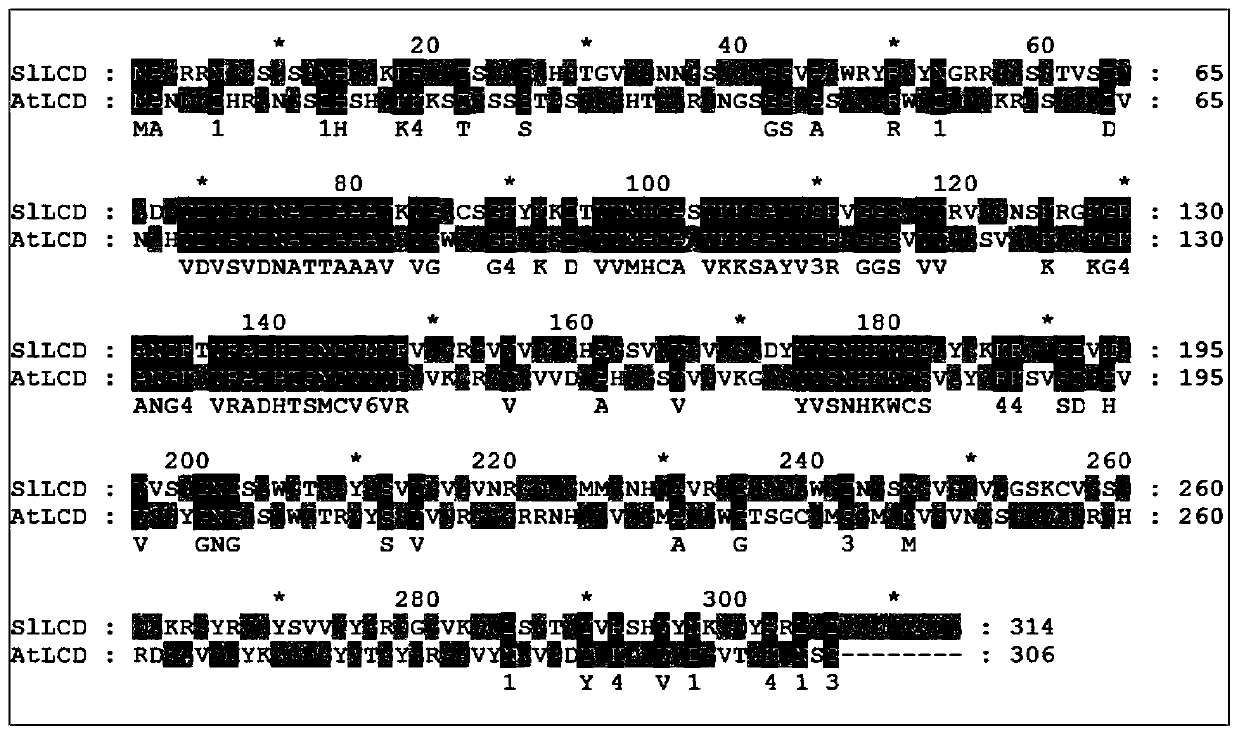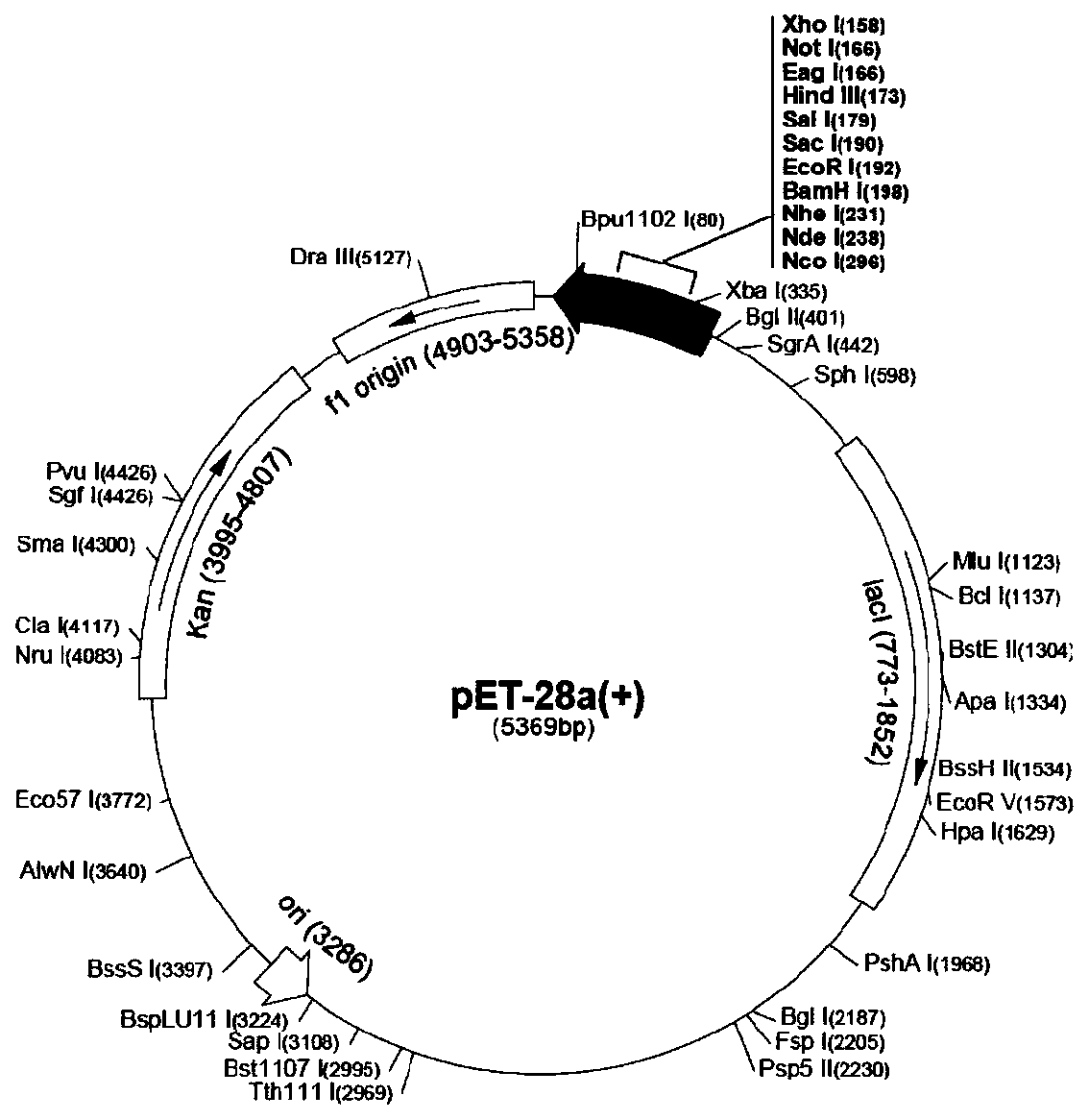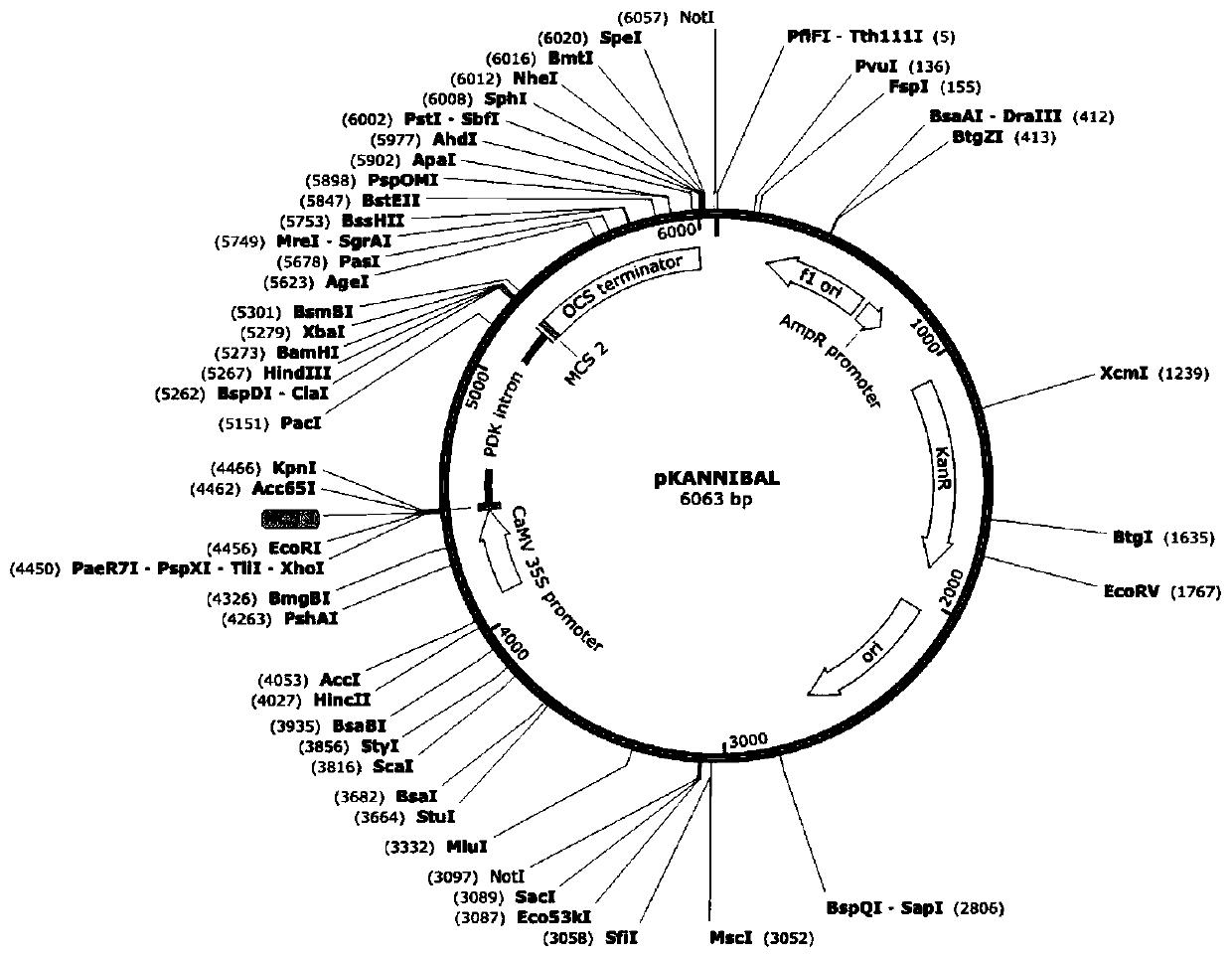Tomato sllcd gene and its application
A tomato and gene technology, applied in the field of genetic engineering, can solve problems such as unknown functions, and achieve the effect of maintaining excellent traits and good application value
- Summary
- Abstract
- Description
- Claims
- Application Information
AI Technical Summary
Problems solved by technology
Method used
Image
Examples
Embodiment 1
[0031] Cloning of embodiment 1 tomato SLLCD coding region gene
[0032] Utilize the forward primer of nucleotide sequence as shown in SEQ ID No.3 and the reverse primer of nucleotide sequence as shown in SEQ ID No.4, clone the coding region sequence of SLLCD gene from the carpel cDNA of tomato MT ;
[0033] PCR program: 94°C, 5 minutes; 94°C, 30 seconds; 55°C, 30 seconds; 72°C, 1 minute 30 seconds; repeat 35 times; 72°C, 10 minutes.
[0034]
[0035] The above-mentioned PCR product was connected to the cloning vector pET28a by the method of double digestion (such as figure 2shown); the ligation product was transformed into Escherichia coli DH5α, and multiplied therein, and the positive clone was sequenced and screened to obtain the cDNA sequence of the coding region of tomato SLLCD gene, its nucleotide sequence is shown in SEQ ID No.1, encoded by it The amino acid sequence of the protein is shown in SEQ ID No.2.
Embodiment 2
[0036] Example 2 Sequence Structure Analysis of Tomato SLLCD Protein
[0037] Tomato SLLCD has the ability to produce endogenous H 2 The function of S has 63% similarity with the protein sequence of LCD coding region in Arabidopsis. The result is as figure 1 shown.
Embodiment 3
[0038] Embodiment 3 tomato SLLCD gene expression vector and transgenic plant
[0039] tomato endogenous H 2 S produces a section of 3' end sequence (400bp, its nucleotide sequence as shown in SEQID No.5) of enzyme-related gene SLLCD, reversely constructed in Figure 4 The shown intermediate vector pART27 is used to inhibit the expression level of SLLCD in tomato by using the principle of RNA interference, and then to study its function.
[0040] Through the Agrobacterium-mediated transformation method, the 3' end sequence of the SLLCD gene cDNA carried by pART27 was transferred into tomato, and the cotyledons after aseptic sowing of tomato seeds were used as recipients to obtain transformed tomato plants, and the selection marker in the plants was kana Mycin. Agrobacterium-mediated transformation methods and steps are as follows:
[0041] The method and steps of Agrobacterium transformation tomato are as follows:
[0042] 1. Seed Preparation
[0043] Wash 1.5g of tomato s...
PUM
 Login to View More
Login to View More Abstract
Description
Claims
Application Information
 Login to View More
Login to View More - R&D
- Intellectual Property
- Life Sciences
- Materials
- Tech Scout
- Unparalleled Data Quality
- Higher Quality Content
- 60% Fewer Hallucinations
Browse by: Latest US Patents, China's latest patents, Technical Efficacy Thesaurus, Application Domain, Technology Topic, Popular Technical Reports.
© 2025 PatSnap. All rights reserved.Legal|Privacy policy|Modern Slavery Act Transparency Statement|Sitemap|About US| Contact US: help@patsnap.com



